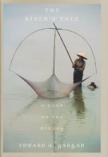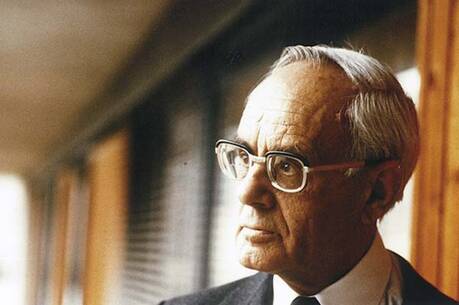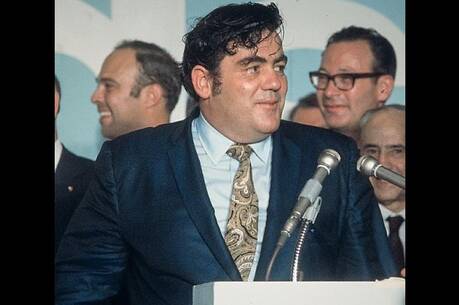Peacenik Adrift
In 1998, just before he turned 50, Edward Gargan did what any normal Vietnam-era c.o., former Berkeley Ph.D. candidate in medieval Chinese history, New York Times foreign correspondent and bureau chief (West Africa, India and Hong Kong) and current Newsday Asia hand would do for a midlife sabbatical: he took a year off and floated down the Mekong River from Dzatoe in Qinghai Province, north of Tibet, all the way to Vietnam and the South China Seaby himself. That was 1,824 miles as the crow flies, around 3,050 miles as the river twists and turns and many miles more, with the side trips, detours and backtracking Gargan had to do or chose to do. Along the way he also explored Burma, Laos, Thailand and Cambodia, though not always on the river itself. When not on board pirogues, fishing boats, barges or hydrofoils, he found himself careening over third world roads or pounding through trackless jungle in rattletrap cars, trucks, buses and various hybrid vehicles.
In many ways, Gargan was the ideal person to take this voyage and file this report. He has solid academic training (he also speaks Chinese and French), half a lifetime’s experience as a globe-trotting journalist, political sophistication, personal sensitivity and a keen eye. It all adds up to a vivid, sometimes gripping account, not a classic, but a solid accomplishment.
Gargan is at his best retracing and reflecting on the unspeakable sufferings of Indochina (and Tibet) over the past half-century. He meets the victims and targets of brutal Han Chinese imperialism, the mindless, dead-end Laotian police state, the apocalyptically genocidal Khmer Rouge and the incompetent, though much-less-cruel-than-the-competition North Vietnamese Communist Party. Gargan may be a savvy veteran, but he is still capable of being thunderstruck, as when he visits the killing fields of Tuol Sleng Prison Museum in Phnom Penh. (I left Tuol Sleng shaking. It is the same reaction one has after leaving Auschwitz, a certain loss of balance in the proximity of evil, at walking in a place where death was commonplace, casual, indifferent, where mercy was unknown, where truth was banished, where dignity was demeaned and tears mocked. Evil was not banal here.)
Gargan’s strong, but never overstated, response to both the horrors of the past and the ongoing miseries of the present (the Chinese assault on Naxi culture in Yunnan Province, the thuggish Hun Sen regime in Cambodia, the Myanmar junta) gains credibility from his frank denunciation of French and American complicity in them. (The United States dropped more bombs on Laos than it did on Germanyand perhaps everywhere else tooin World War II.) Gargan has paid his dissident’s dues. In an astonishing note near the end of the book, he casually mentions that he refused to register for the draft, even though his near-blindness in one eye would have guaranteed him a deferment; as a result he spent two years in a federal prison in Kentucky.
Political saints, however, even gentle, honest, fair-minded ones like Gargan, don’t automatically make dramatic narrators. Gargan tells us very little of his private life (except for his ability to endure loneliness). And while this remarkable odyssey inevitably makes one think of Huck Finn (with all the wickedness festering and threatening on the banks of the great river), it does not lead to much if any self-discovery. Maybe Gargan was just too grown up.
But while he barely sketches in his own personal story, Gargan often tries a bit too hard to paint vivid pictures of the stunningly colorful and exotic land- and waterscapes around him. No doubt all those years of filing cut-and-dried bits of reportage left him hankering to fire his vocal rage. He does give us a lot of prose-snapshots (though the 34 competent photographs of his own included in the text are, unfortunately, black and white), but he sometimes lapses into overwriting and downright clumsiness: Then almost miraculously, although I suspect truly not uncommonly along the well-travelled Mekong, a tubby wooden cargo vessel manacled to the shoreline appeared before us. The sun bedded down, leaving behind a smudged palette of magenta and bronze.
Still, it’s hard not to like Gargansmart and self-effacing make a nice combination. And in an age when in depth news means (maybe) three minutes of breathless sound bites, Gargan is someone who has really taken the timea year to see the Mekong, and day after leisurely day to do things like wander through the Mekong Delta or attend the ordination of an ex-policeman as a Buddhist monk in Savannakhet, Laos, or listen to the wrenching tales of Vann Nath, a Cambodian political prisoner who avoided execution (but not torture), thanks to his odd talent for painting portraits of Pol Pot.
Who knows, with more people like Gargan living and writing abroad, a whole new archetype might emerge: the Beautiful American. In Southeast Asia at least, despite all the havoc we wreaked there a generation ago, the people seem to be ready for it.
This article also appeared in print, under the headline “Peacenik Adrift,” in the July 15, 2002, issue.








